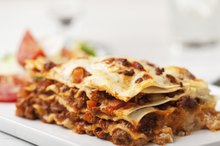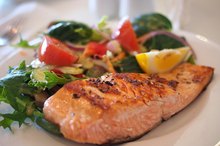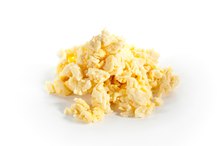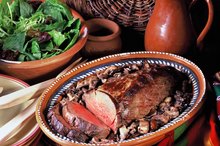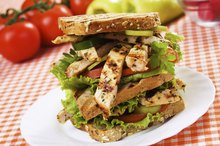Are TV Dinners Healthy?
TV dinners can allow you to get an inexpensive meal on the table quickly and without much planning, and they come in a wide variety of choices so you can find some that are appealing to you. They can be calorie-controlled and sources of essential nutrients. Most processed foods are not as healthy as their unprocessed counterparts, however, and a healthy diet includes freshly prepared meals whenever possible.
Compare TV Dinners to the Alternatives
TV dinners are not healthy if the alternative is a home-prepared meal with unprocessed ingredients, such as fresh vegetables, whole grains and chicken or fish. Compared to unprocessed foods, TV dinners can be higher in sodium and sugar. For example, a 3-ounce portion of roast beef tenderloin has no sugar and only 48 milligrams of sodium, while a portion of macaroni and cheese with beef has 479 milligrams of sodium and 10 grams of sugar. TV dinners also contain preservatives that can be unhealthy, according to Columbia University. TV dinners can be healthier than some other options, such as picking up a meal from a fast food drive-thru or ordering a pizza when you get home. These frozen meals can also be your best option if the only available alternatives are processed snack foods, such as chips or snack cakes.
Components to Look for in a TV Dinner
Calories in Meat Lasagna
Learn More
Select a TV dinner that provides at least one serving of vegetables. It should also contain a source of lean protein, such as chicken breast or fish, and a whole grain, such as brown rice or whole-wheat pasta, or a starchy vegetable, such as sweet potato or acorn squash. Examples include shrimp stir-fry with vegetables and brown rice, whole-wheat pasta with chicken breast and broccoli florets and turkey breast with sweet potatoes and green beans. Choose a meal without a grain or starchy vegetable if you are on a low-carbohydrate diet.
Calories and Essential Nutrients
Some TV dinners can fit within your calorie limits to prevent unwanted weight gain. Single-serve TV dinners assist with portion control. Beef and beans are sources of iron, which is a component of healthy red blood cells, A 5-ounce beef and bean burrito contains 4 milligrams of iron, or 22 percent of the daily value. Dinners with cheese provide calcium, which helps maintain bone health. A 1-cup serving of frozen cheese lasagna provides 199 milligrams of calcium, or 20 percent of the daily value. Vegetables, whole grains and beans are sources of dietary fiber, which helps lower your risk of heart disease. Read the nutrition label to determine how many calories and which nutrients the dinner contains.
Many Common Choices Are High-Fat
Lunch Ideas for a High-Fat Low-Carb Diet
Learn More
Chicken, turkey and beef pot pies, macaroni and cheese and lasagna can be high in fat and saturated fat. A beef pot pie contains 30 grams of fat and 11 grams of saturated fat, and a 10-ounce portion of frozen meat and cheese lasagna has 13 grams of total fat and 6 grams of saturated fat. Saturated fat raises your cholesterol levels and can increase your risk for heart disease, and a healthy adult on a 2,000-calorie diet should get no more than 22 grams per day. Choose low-fat TV dinners to limit your consumption of saturated fat.
Related Articles
References
Writer Bio
Natalie Stein specializes in weight loss and sports nutrition. She is based in Los Angeles and is an assistant professor with the Program for Public Health at Michigan State University. Stein holds a master of science degree in nutrition and a master of public health degree from Michigan State University.
